iRacing has been around since the mid-to-late 2000’s. While we don’t call this iRacing 2.0 despite the service actually making that designation back in 2011, a lot of the parts and pieces around the platform are numbered or upgraded from where they were at that start. Look at the New Tire Model, which is now in version 7.0, for example.
Before things really started to pop off on the iRacing service around the Covid-19 pandemic, the damage model had been pretty consistent through the years. The model was more rigid with cars able to stand up to some pretty gnarly incidents.
With the damage, the engine power would usually decrease if it wasn’t requiring repairs with a meatball flag. At the start of everything, you even needed a decent enough computer to even see damage obtained.
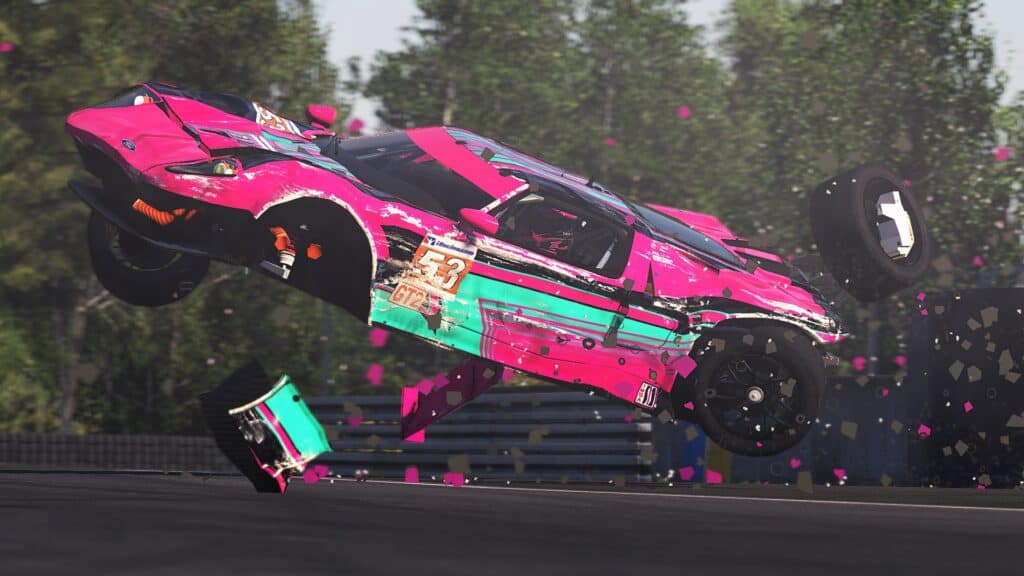
Nowadays, depending on the car you’re driving, you might see parts and pieces of yours and other driver’s cars flying around you upon impact. That is thanks to iRacing’s New Damage Model (NDM) that was introduced in beta in 2019. While the NDM is a fresh philosophy on how damage affects the car internally and externally, it also has some pretty neat visual effects to go with it.
Tires will bounce around, nose cones and wings litter the racing groove, and the hood might even flap up in front of your windshield and obstruct your view.
As of 2022 Season 3 on iRacing, the New Damage Model now encompasses 34 vehicles on the service while the Classic Damage System (CDS) is still enabled on 99 vehicles. While many of the more popular racing vehicles are still on the CDS, like the GT3 cars, Prototypes and a lot of the dirt-based cars, iRacing is still working on this damage initiative around the service at this time.
New Damage Model HISTORY
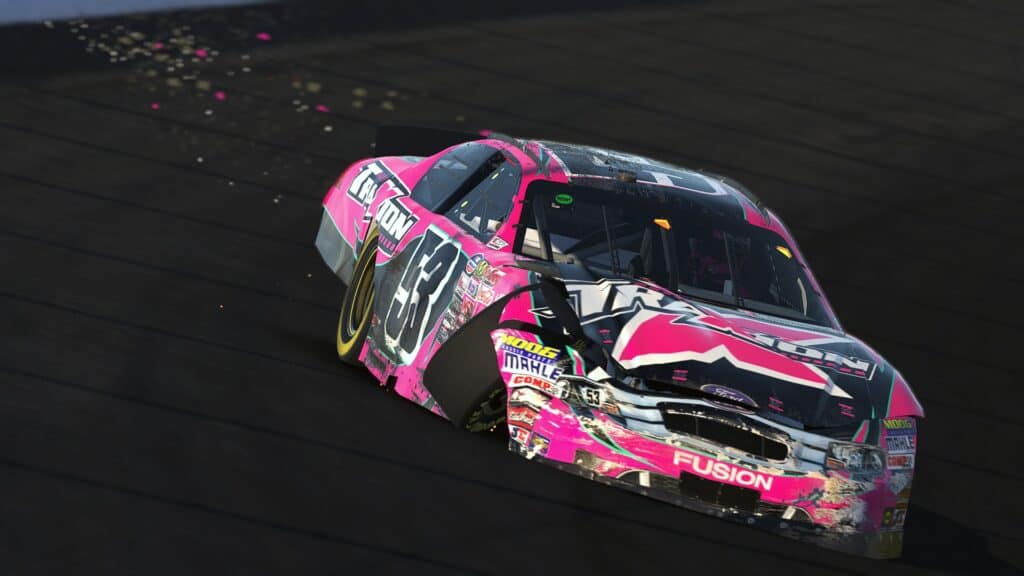
Teased in a Developer’s Blog post back in June 2018 by Richard Jobling (Senior Software Engineer at iRacing), the New Damage Model’s goal was to create a more realistic collision, whether that be with a wall, another car, or an object. Fast forward to 2019 and the NDM is getting teased in promotional footage on the iRacing YouTube channel.
Later in the year, to kick off the 2019 Season 4 build, the Skip Barber Formula 2000 became the first car to feature the NDM. The new feature would start out in beta with hopes to fully release it later down the line.
To start 2020 Season 1, the new build featured another new car with the NDM, the Dallara F3. No longer stating it was in beta, the NDM was officially live on the service with more vehicles planned in future patches.
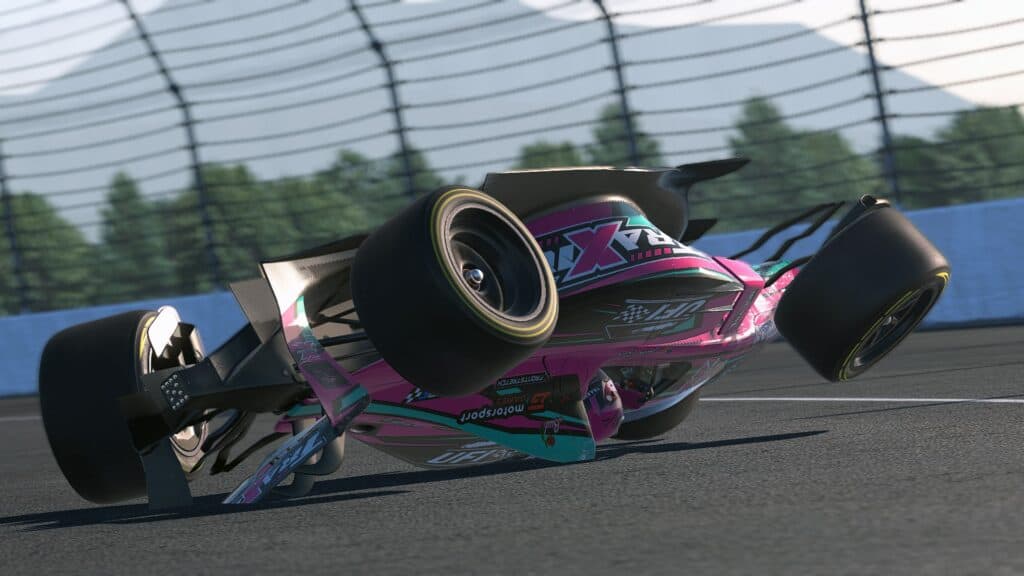
They haven’t come without issues, however. Some cars that initially received the NDM, like the NASCAR Class A Gen 6 cars and the Porsche 911 GT3 Cup still don’t have that feature back. Other cars, like the Street Stock and the NASCAR 1987 Stock Cars, had to have it removed to be improved due to issues found after release. Those cars do have it back at this point in time.
The feature continues to be worked on with every build, with new cars added when they can. The brand new Mercedes-AMG F1 W12 E Performance is the newest car on the service, and it has the NDM activated.
New Damage Model FEATURES

With the implementation of the New Damage Model, there are some clear differences between that and Classic Damage System. Before you even visually see what happened, you can hear a different crunching sound of metal as you make an impact. These sounds are meant to be more realistic and less computer-generated.
The NDM also affects the way the car handles after impact differently. With the CDS, wheel axles might be bent out of proportion with cars still drivable from that point. Steering wheels also might be flipped or off-center. For NDM, enough of an impact could lose a wheel or separate the wheel from the axle to a point where the wheel will no longer turn. Body panels might drag on the ground, or just fly off completely.
Essentially, the NDM cars are more soft-bodied as well, so the impact they make is more realistic, whereas with the CDS, you might find a bouncy wall situation. Particles are also a bigger part of the NDM. As there are more points of contention on a car with NDM enabled, you might see small objects appear on contact flying about the screen.
CARS WITH New Damage Model in iRacing
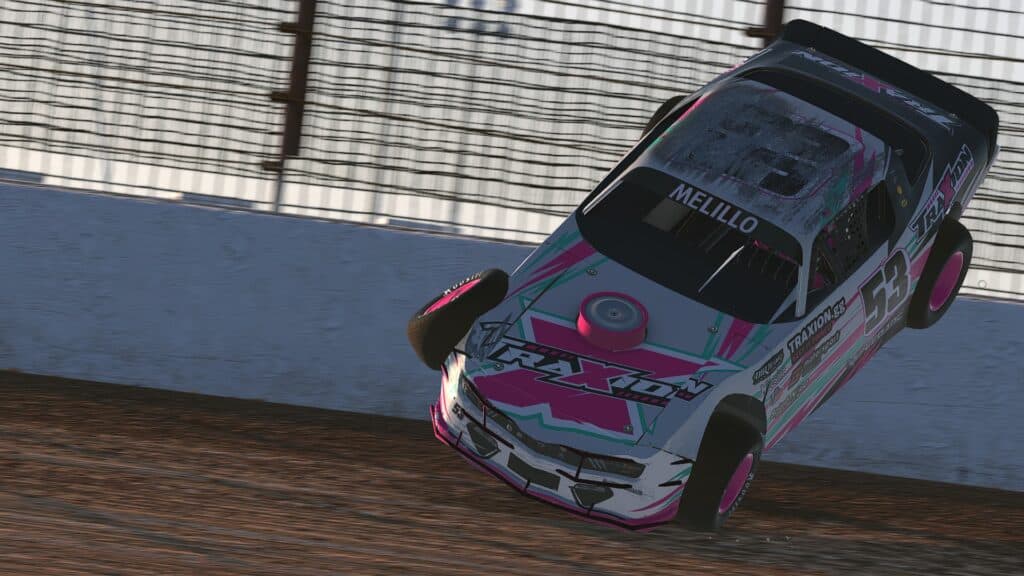
At the time of this writing, there are 133 different cars to drive on the iRacing service. 34 of those cars have the New Damage Model enabled. While I couldn’t find an official list anywhere, I sat down and drove every single car on the service into a wall at full speed to see the outcome. No better way than the trial and error method, am I right?
Thankfully after posting this, it is much easier as iRacing will update you on what gets added in builds and patches. For 2022 Season 3, five cars were added to the list, including the NASCAR NEXT Gen vehicles and two new cars that were released. Here is that full list.
- Acura ARX-06 GTP
- ARCA Menards Chevrolet Impala
- Aston Martin Vantage GT4
- Aston Martin DBR9 GT1
- Audi R8 LMS
- Audi R8 LMS GT3
- Audi RS 3 LMS
- BMW M4 GT3
- BMW M4 GT4
- Cadillac V-Series.R GTP
- Chevrolet Corvette C6.R GT1
- Dallara F3
- Dallara iR-01
- Dallara IR18
- Dallara P217
- Dirt Late Model (ALL)
- Dirt Sprint Car
- Dirt Sprint Car Non-Winged
- Dirt Street Stock
- Dirt UMP Modified
- Ferrari 296 GT3
- Ferrari 488 GT3 Evo 2020
- Ford GT GT3
- Ford GT GT2/GT3
- Ford Mustang FR500S
- Formula Renault 2.0
- Formula Vee
- Global Mazda MX-5 Cup
- Honda Civic Type R
- Hyundai Elantra N TC
- Hyundai Veloster N TC
- Indy Pro 2000 PM-18
- iRacing Formula iR-04
- Lamborghini Huracán GT3 EVO
- Ligier JS P320
- McLaren 570s GT4
- McLaren MP4-12C GT3
- Mercedes-AMG F1 W12 E Performance
- Mercedes-AMG GT3 2020
- Mercedes-AMG GT4
- Modified – SK / NASCAR Whelen Tour Modified (both models)
- NASCAR Legends Buick LeSabre – 1987
NASCAR Legends Chevrolet Monte Carlo – 1987
NASCAR Legends Pontiac Grand Prix – 1987
NASCAR Legends Ford Thunderbird – 1987 - NASCAR Next Gen Chevrolet Camaro ZL1
- NASCAR Next Gen Ford Mustang
- NASCAR Next Gen Toyota Camry
- NASCAR Truck Chevrolet Silverado
- NASCAR Truck Ford F150
- NASCAR Truck Toyota Tundra TRD Pro
- NASCAR Xfinity Chevrolet Camaro
- NASCAR Xfinity Ford Mustang
- NASCAR Xfinity Toyota Supra
- Porsche 718 Cayman GT4 Clubsport MR
- Porsche 911 R GT3
- Porsche 911 GT3 Cup (992)
- Porsche 911 GT3 R (992)
- Porsche 963 GTP
- Porsche Mission R
- Radical SR10
- Ray FF1600
- Renault Clio R.S. V
- SCCA Spec Racer Ford
- Skip Barber Formula 2000
- Street Stock
- Super Formula SF23
- Toyota GR86
- USF 2000
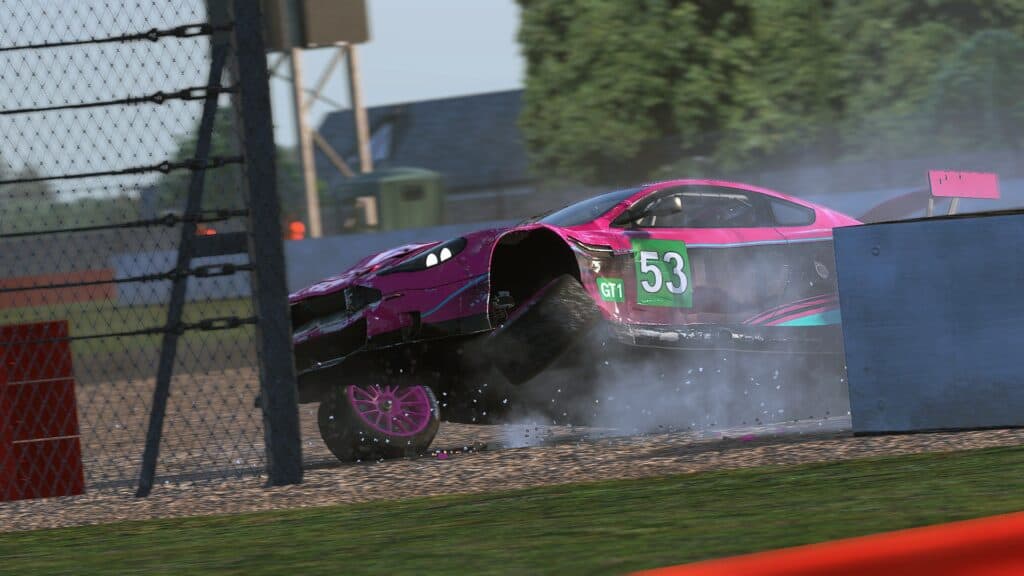
Switching off the NEW DAMAGE MODEL
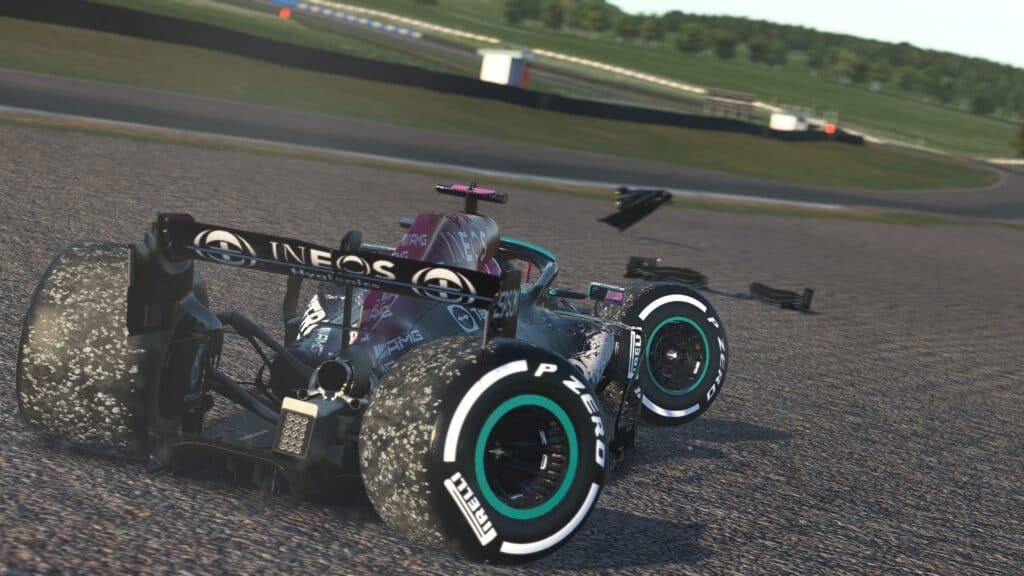
If the New Damage Model isn’t really your thing, there is a way to turn it off for your favorite car. By hosting a session with a car that does not have NDM enabled, all cars chosen for that race will revert back to the CDS. There also exists a mode called Healing Damage. If this is selected, cars will break as intended, whether they have NDM or CDS, but will heal back to a new car a few moments later.
For cars not on the NDM, there is a glitch that could occur where an axle might hyper-extend from where it should be if someone is hit hard enough. Sometimes you’ll see a wheel protruding from a car where it shouldn’t be. It’s one of the flaws of the older CDS, but NDM essentially eliminates this glitch as axles are more often to break instead.
While the NDM continues to improve over time, I suspect that it will still be a while before it is found on more prominent cars. Last year, it did show up on a car I’m familiar with, the NASCAR Gen 6. Unfortunately, the system didn’t work as intended and it was removed shortly after. I like the NDM, to be honest, and I look forward to seeing it implemented further on the iRacing service in builds to come.
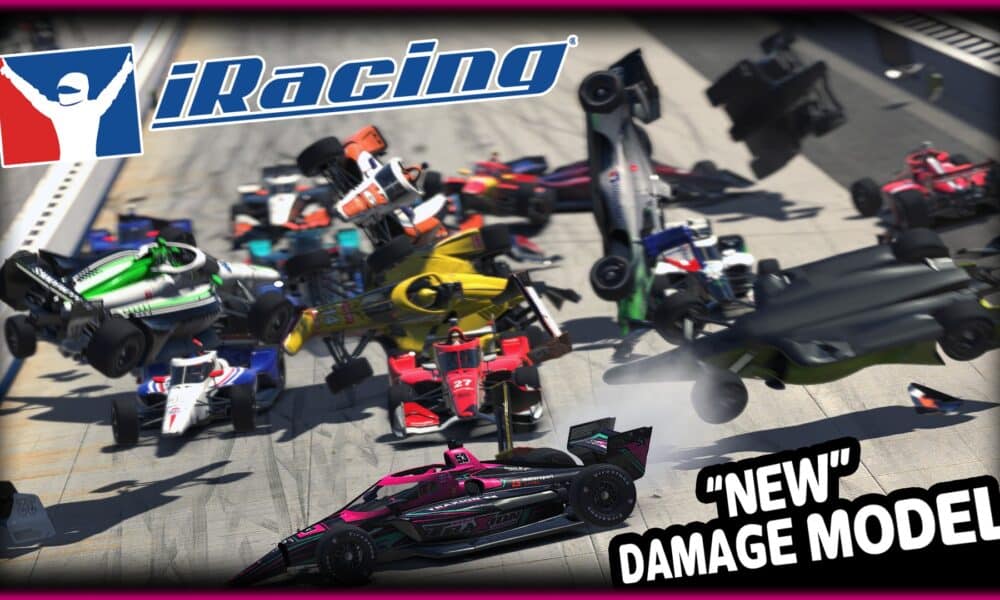

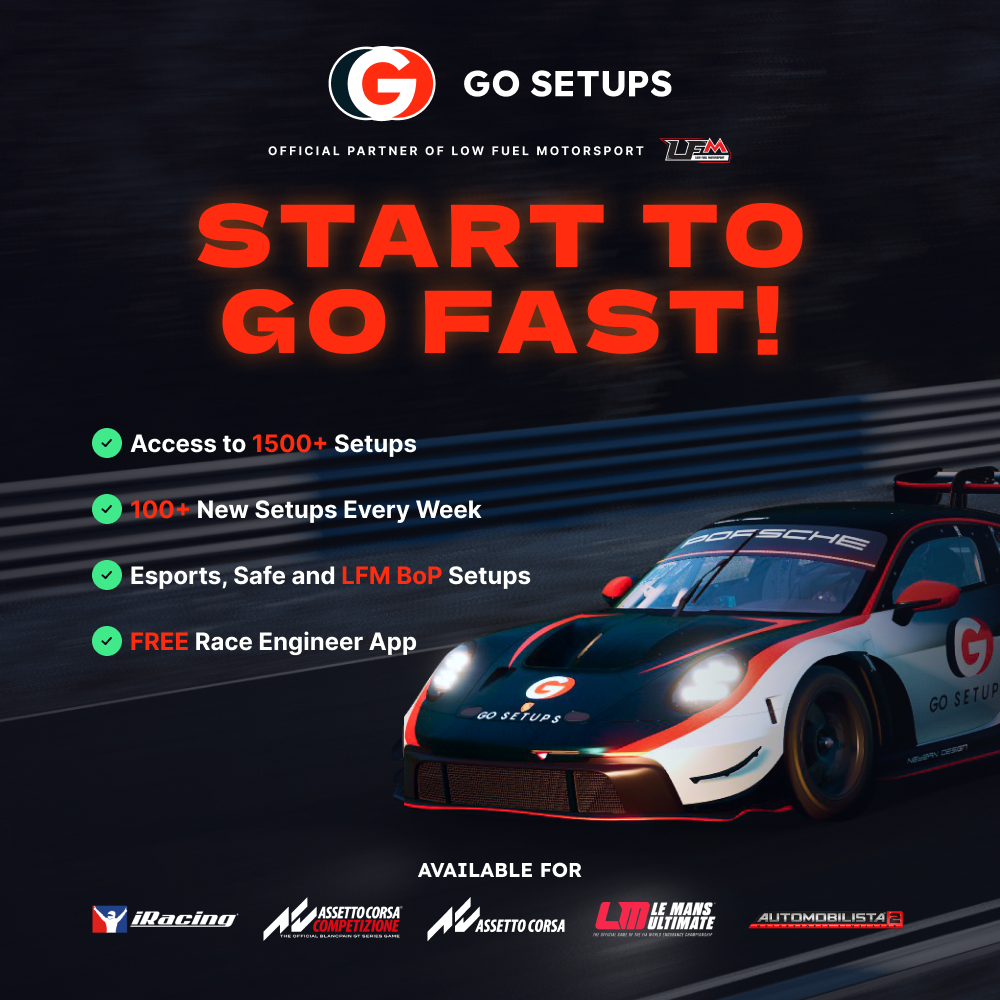





Chat with the Community
Sign Up To CommentIt's completely Free